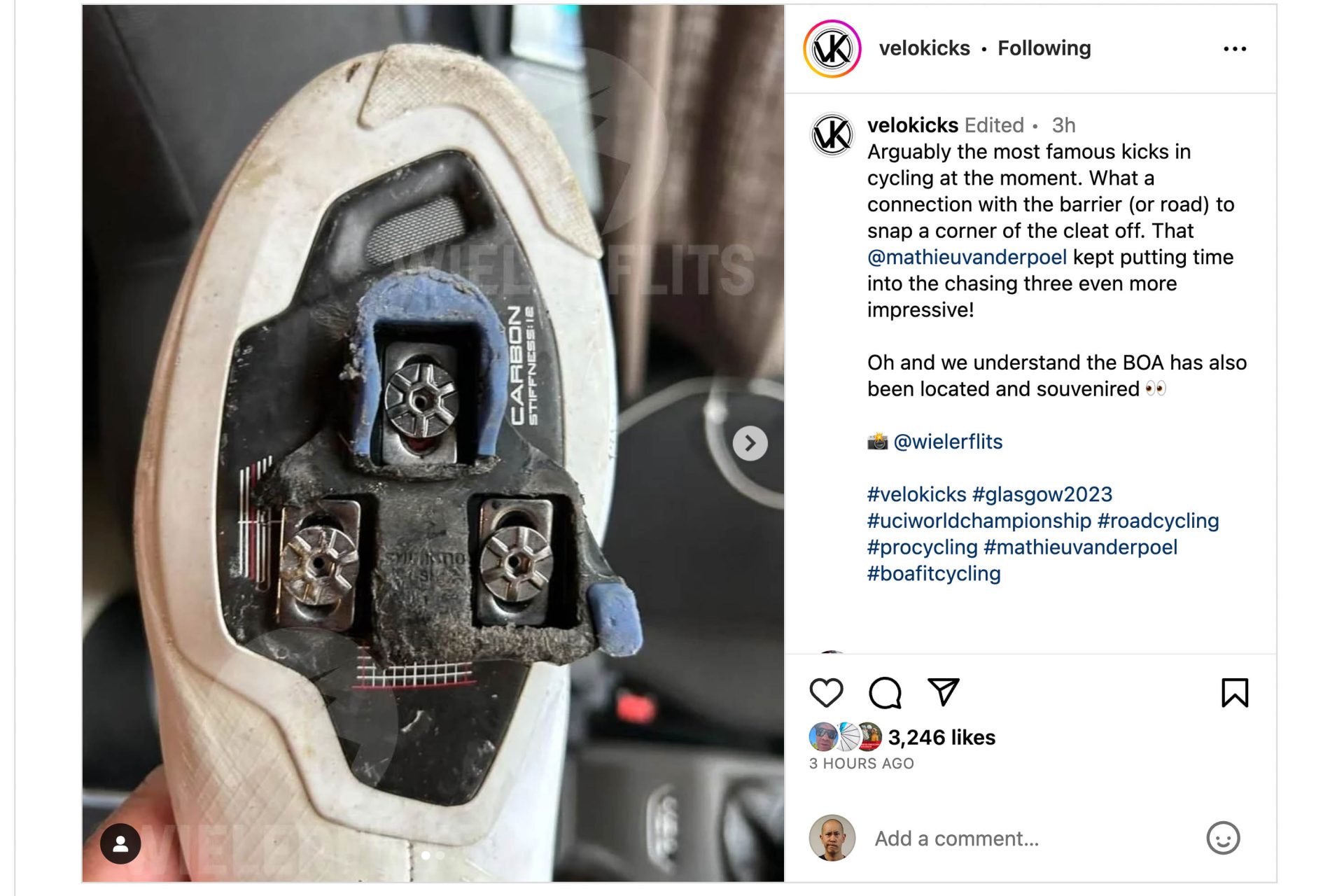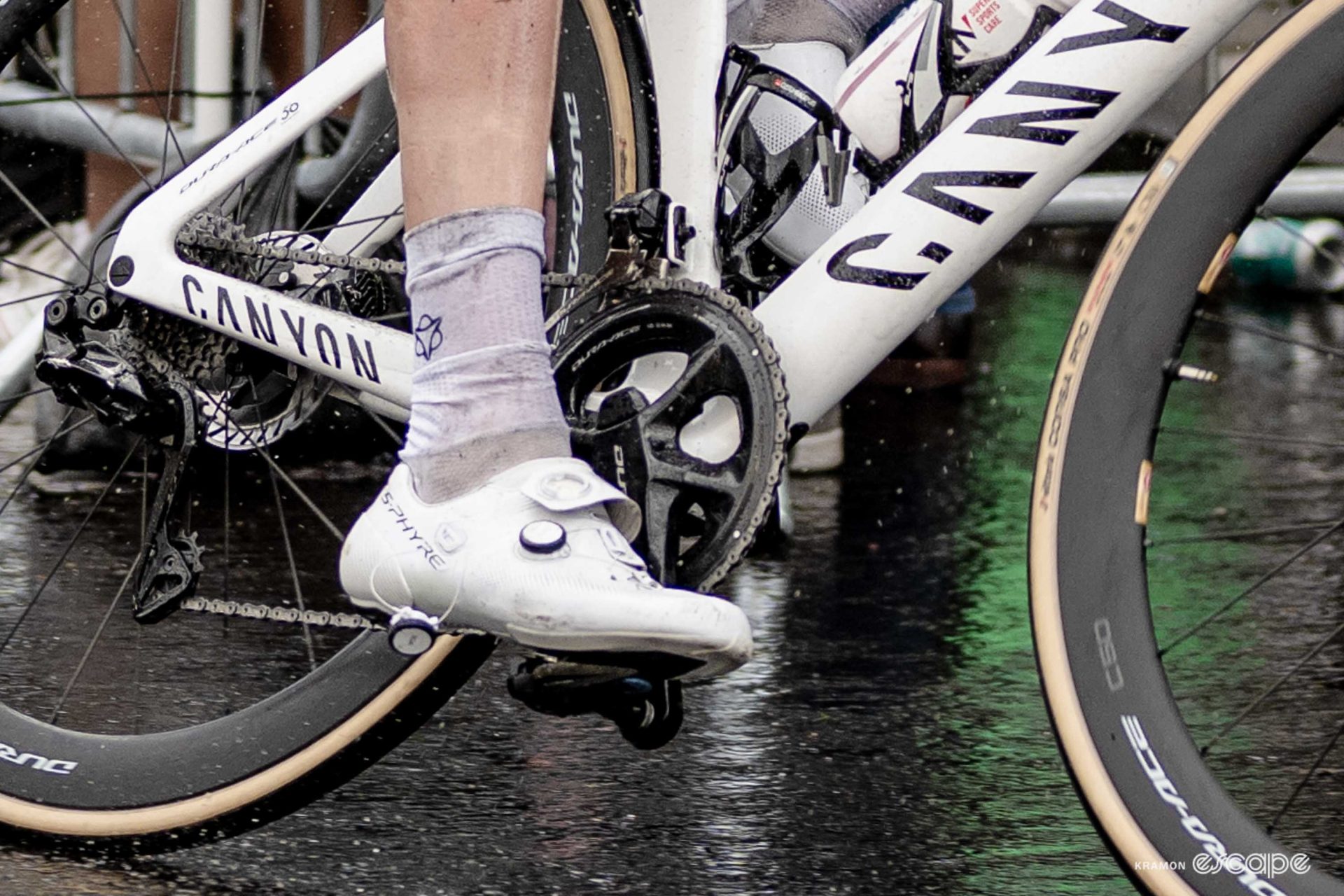By all accounts, Mathieu van der Poel’s victory in the UCI Elite Men’s World Road Championship on Sunday in Glasgow was masterful – a stunning display of raw power, grit, and cunning to earn the rainbow stripes against a chasing trio of similarly immense talent. The fact that he was still able to make his attack stick after sliding out in a wet corner is incredible in and of itself, and that he also managed to do so with a broken shoe has understandably been a major taking point.
However, what we should perhaps be discussing even more is what else he broke in that crash, and that he was able to keep that shoe on the pedal at all.
Van der Poel’s mountain bike and cyclocross background was evident in the way he instinctively got his inside foot down on the ground immediately after his back wheel started to slide. Cat-like reflexes? No question. Had his front wheel not slid out right afterward as well, he might have managed to keep it upright through the corner. But we now all know what did happen, and in the ensuing impact and slide into the barriers, the upper Boa dial on Van der Poel’s Shimano S-Phyre SH-RC903 shoe broke away from its snap-in base, leaving a less-than-secure fit for the remaining 16.6 km.
Van der Poel at least still had the other Boa cable, though, and the way that shoe is shaped undoubtedly played a big part in his foot staying in the shoe at all. Even if both Boas had failed, his foot wouldn’t have just fallen out under normal pedaling. The headlines may have turned out very differently had the race come down to a sprint, of course, but as long as Van der Poel didn’t pull up too hard, it’s not all that surprising he was able to continue as he did.

What’s more startling is that his cleat was broken, too.
At some point during the crash (likely when he first put that foot down), one of the rear corners of Van der Poel’s Shimano SPD-SL cleat snapped clean off. All three bolts were still holding the cleat onto the shoe, but in addition to losing one of the three walking pads (which isn’t significant in this case), Van der Poel also lost about a third of the rear section of the cleat that secures it to the pedal.

Think about this.
Fundamentally, the cleat is what connects the rider to the pedal, and the design of modern shoes and pedals are such that if that cleat interface is compromised, it’s often nearly impossible to keep the two connected at all, let alone lay down a superhuman amount of power. And the part of the cleat Van der Poel broke is especially critical as it’s one of the key surfaces that locks the cleat into the pedal. Had he rotated the heel of that foot even just a few degrees inward (or if the opposite corner had broken off), his shoe would almost certainly have disengaged. Or if a little more of the cleat broken away in that crash, it would have been akin to pedaling on an ice cube and his shoe would have come right off the pedal.

In either case, it would have been nearly impossible for him to keep riding.
Put another way, Van der Poel’s day – and his first road elite World Championship title – was saved by just a few millimeters of plastic.
What. A. Race.
Did we do a good job with this story?

